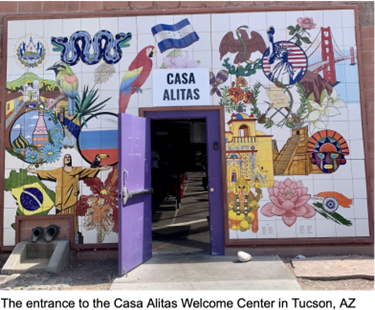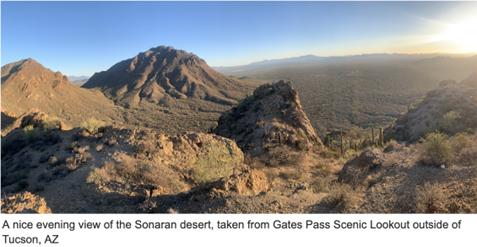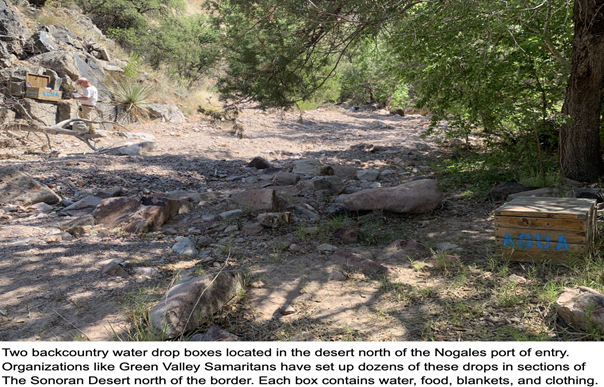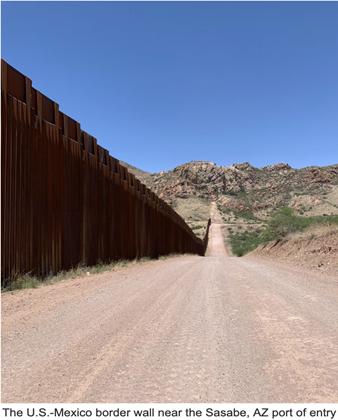Hello! My name is Quintin Van Dyk and I am an MPH student in the Global Health concentration at UNC Gillings. I have been in Tucson, AZ for the last two months completing my practicum with Casa Alitas, a humanitarian aid organization that provides shelter and other resources to asylum seekers after they cross the nearby border.
Since I last wrote, a lot has happened. Casa Alitas has continued to deal with the effects of significant US immigration policy changes that took place in early to mid-May. New policies, such as the Asylum Transit Ban and the end of Title 42 have caused large demographic changes within Casa Alitas. There have been large influxes of arrivals by asylum seekers coming from Asian and African countries like India and Mauritania. This has been a challenge for Casa Alitas, as their staff wasn’t equipped to handle such a large volume of guests that do not speak English or Spanish. Some of these guests also have unique dietary restrictions, which has made it difficult for the organization to quickly adapt and provide food that all guests are able to eat.
I have been spending a lot of my time working with the program director at Casa Alitas on a research project to better understand the impact of immigration policies like Title 42 on asylum seekers attempting to cross the border and enter the United States. I started by cleaning a large set of raw data that the organization has collected over the last few years and am currently working on building data visualizations that show how trends at Casa Alitas have changed in response to new federal policies. We are hopeful that this project will help the organization better prepare for future policy changes and also understand which countries of origin have been most disproportionately impacted by these policies in the form of medical conditions, family separations, and loss of sponsors.
In my free time, I have continued to volunteer with other local humanitarian aid organizations in the Tucson area like Tucson Samaritans and Green Valley Samaritans. I recently went on a backcountry water drop trip with Tucson Samaritans where we hiked through small canyons and arroyos in the desert north of the border to resupply water boxes. I have also spent time going on hikes and enjoying the amazing sunsets that the Sonoran Desert has to offer. I have really enjoyed my summer in Tucson and am very grateful for the opportunity that I have had to work with Casa Alitas. I hope you are all having a great summer as well!
– Quintin


 Medicine physician. Together, we volunteered at Casa Alitas on projects including creating art and decorations for the newest shelter, hanging clotheslines for the guests to dry their clothes, and creating a medication catalog for the medical staff. We also volunteered with other local humanitarian aid organizations including
Medicine physician. Together, we volunteered at Casa Alitas on projects including creating art and decorations for the newest shelter, hanging clotheslines for the guests to dry their clothes, and creating a medication catalog for the medical staff. We also volunteered with other local humanitarian aid organizations including 